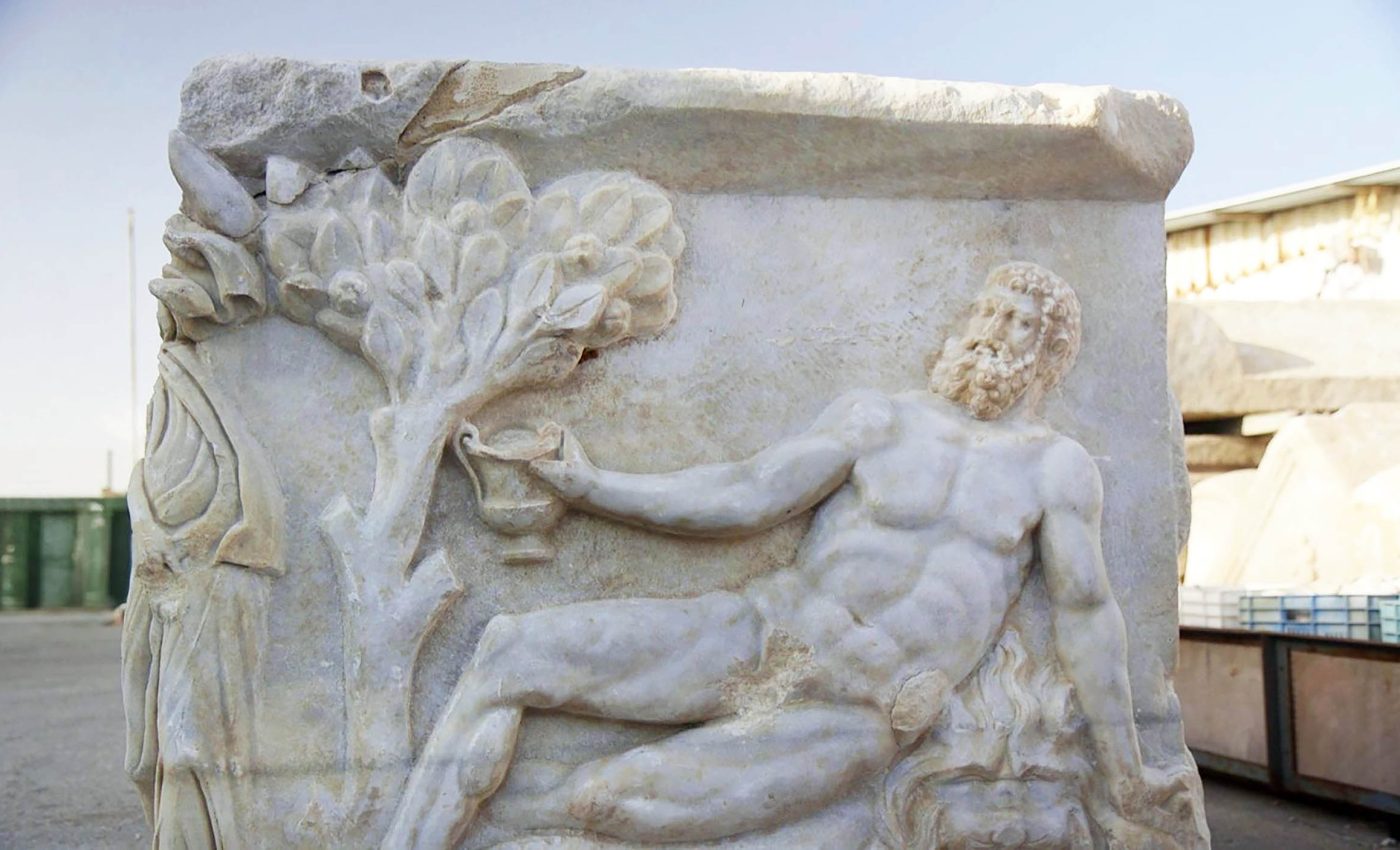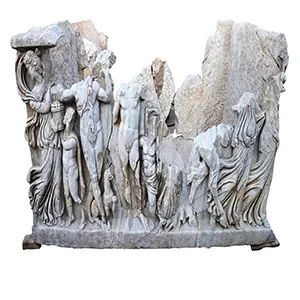
Remarkable 1,700-year-old coffin sculpture shows Hercules fighting the god of wine
A marble sarcophagus is a stone coffin carved to honor the dead, and sometimes to teach the living. A new find in Caesarea shows a scene few expect on a coffin, a drinking contest between Dionysus, the god of wine, and Heracles, the tireless hero better known by his Roman name, Hercules.
The scene is not cartoonish or crude. It is a careful Roman work that mixes myth with mourning, pleasure with parting.
Lead fieldwork on the project included Nohar Shahar of the Israel Antiquities Authority (IAA), which oversees archaeological research across the country.
Dionysus vs. Hercules
The coffin’s long face shows Dionysus at the center of a lively procession, with attendants, animals, and instruments, while the short face holds a moment of loss.
“Hercules’ condition, depicted on the sarcophagus as someone who is no longer able to stand, points to the obvious answer,” said Shahar.
The detailed report describes Hercules lying back on a lion skin with a cup in hand, his stamina spent, while the wine god presides over the revelry.
On the sides, carvers packed the stone with figures from the god’s traveling party.
The first time you see maenads, female followers of Dionysus, and satyrs, part human and part goat, it helps to know these were standard actors in Dionysian art.
Drinking contest sculpted on a coffin
To Roman eyes, funerary art often spoke in the language of myth, parties, and music. In that visual vocabulary, Dionysian motifs could promise joy after sorrow, not a crude call to excess.
This coffin uses that code with restraint. The god’s victory is not a joke at the hero’s expense, it is a sign that even strength bows to sleep, and that wine, feasting, and music can signal renewal.
Roman viewers did not all read that message the same way. Still, in many Roman pieces, the god’s followers escort the dead as if guiding them to a final banquet, a picture of passage rather than a wall of grief.

Motif with local roots
The drinking contest is not a random choice for a port city on the Mediterranean. A third century mosaic from Sepphoris shows the same contest, set in a grand dining room that once hosted elites.
Another mosaic from Antioch shows the pair raising cups, the god serene and the hero already fading, a polite image of rivalry that carries a quiet lesson.
These parallels explain why the scene would make sense in a home, and now, on this coffin.
“While the story often appears on mosaics from the period, this is the first time we find it on a sarcophagus, at least in our region,” said Shahar. He underlined how unusual this choice is for a burial.
Caesarea Maritima began as a Roman harbor city and stayed important for centuries. A coffin carved with myth and imported marble fits a place where cultures met and tastes traveled.
The style points to patrons who liked Greek stories and Roman taste, even in death. It also hints at a family that wanted a sendoff filled with music, dance, and a promise of more life, not a scene of silence.
Why Hercules and Dionysus?
Archaeologists do not guess wildly about meaning. They read the familiar signs of Roman funerary art, then weigh them against local finds and workshop habits.
The body of evidence around Dionysus on coffins is large, from garland chests to crowded processions.
It comes with an old idea, that the god’s world, with its wine and theater, could soften the fear of loss and turn funerals into passages marked by rhythm and ritual.
It is tempting to read every leaf and lion as a coded statement. Caution helps, because carvers borrowed, clients mixed signals, and workshops balanced cost with craft.
Here, the cast of characters supports one clear choice. The family put the god of wine on a coffin, not to gloat over a fallen hero, but to give a last party its proper host and a final walk its proper music.
Hercules, Dionysus, and historical context
Viewers will ask who won. The hero’s slump answers that, the god did. But the more important point is the escort, the crowd that turns a lonely trip into a procession. That is where the art finds its voice, in the company it offers the dead.
The marble broke into pieces long ago and lay hidden under dune sand. The conservation team cleaned, matched, and joined the blocks so the full scene could be read again.
Restoration is not guesswork. It is slow, reversible, and precise, so that future researchers can track each step and adjust readings if new data comes to light.
Earlier research recorded several Dionysian sarcophagi from Caesarea Maritima, showing that the theme had currency in the city’s elite burials.
The new coffin adds a fresh chapter by placing the drinking contest, not the usual triumph, on a local burial.
It tells us that Roman art in this port could carry more than one Dionysian message. It could comfort, it could show status, and in this case, it could tip a cup to a god who promised a gentler crossing.
The full study was published by Israel Antiquities Authority.
—–
Like what you read? Subscribe to our newsletter for engaging articles, exclusive content, and the latest updates.
Check us out on EarthSnap, a free app brought to you by Eric Ralls and Earth.com.
—–













